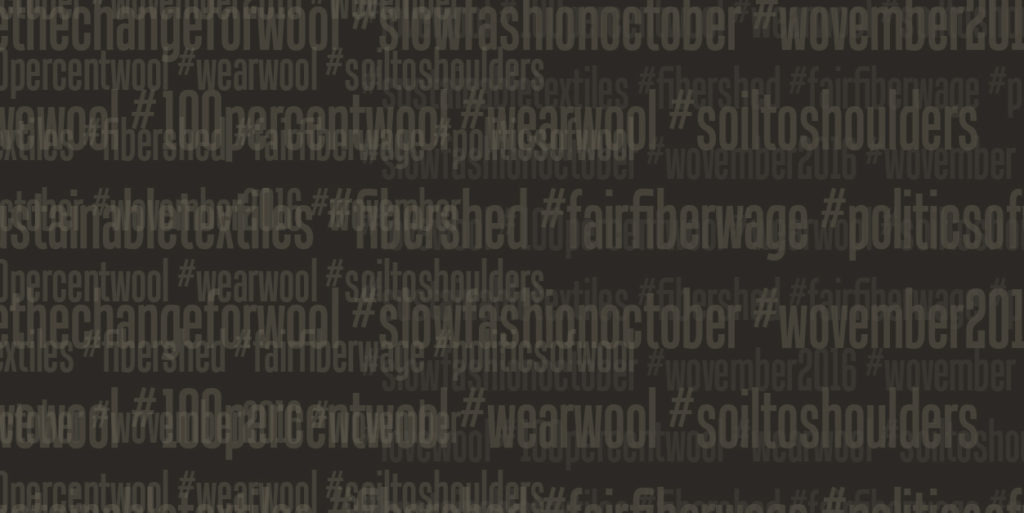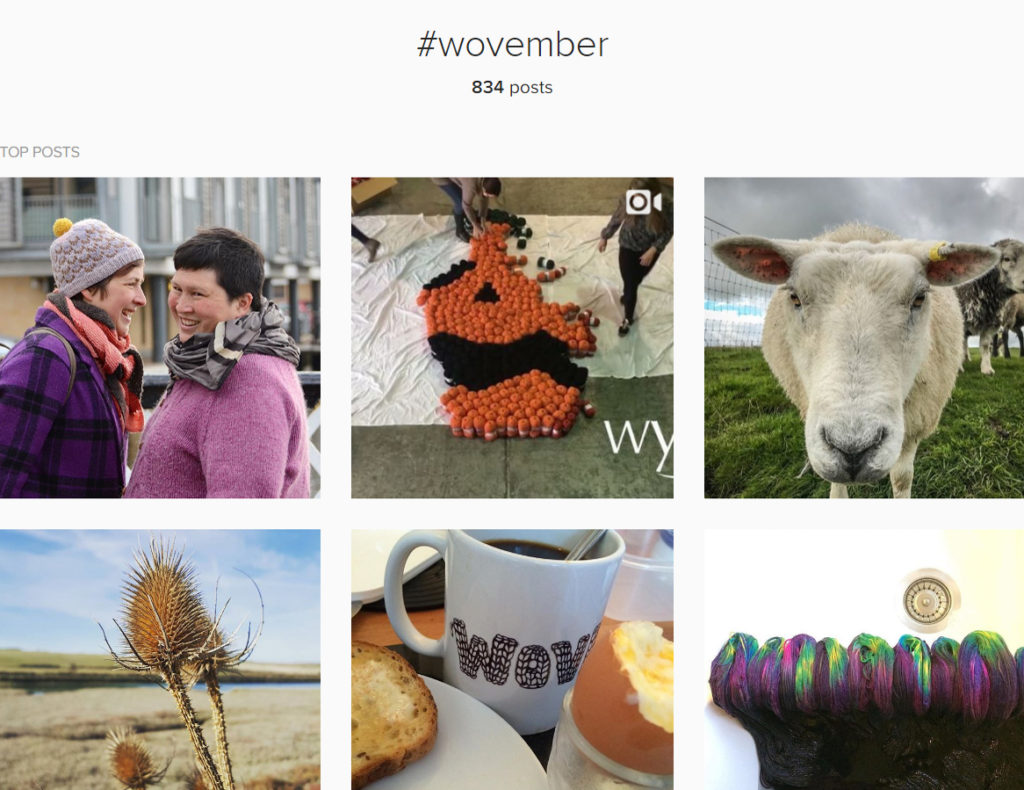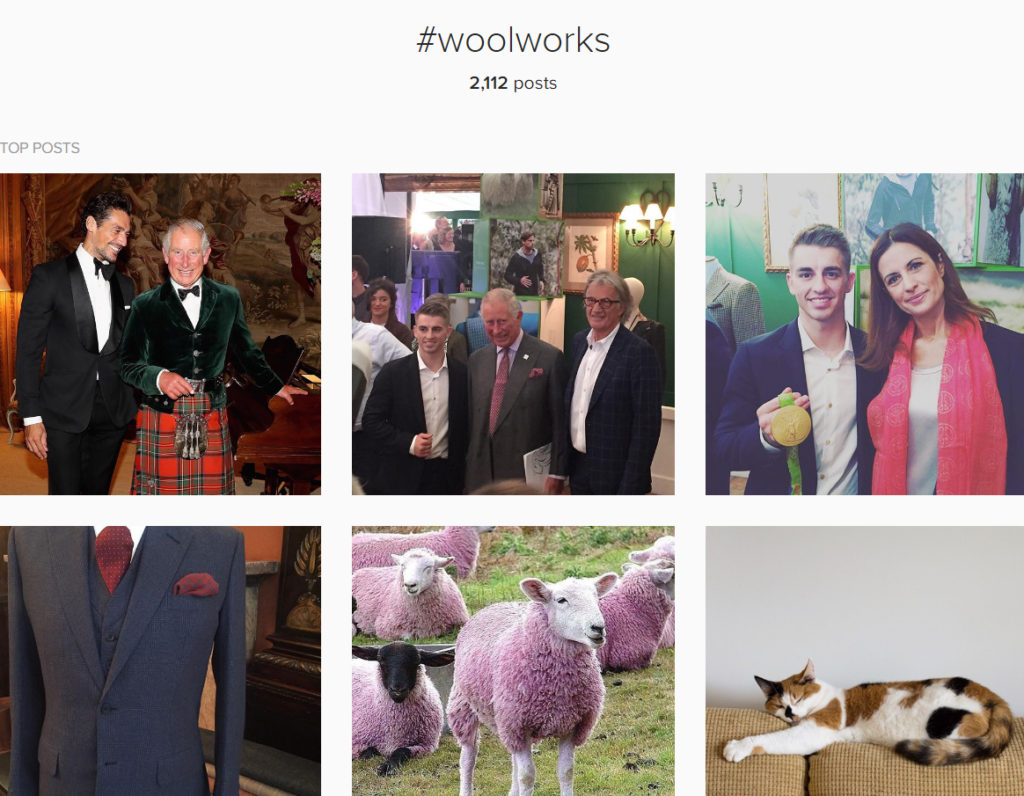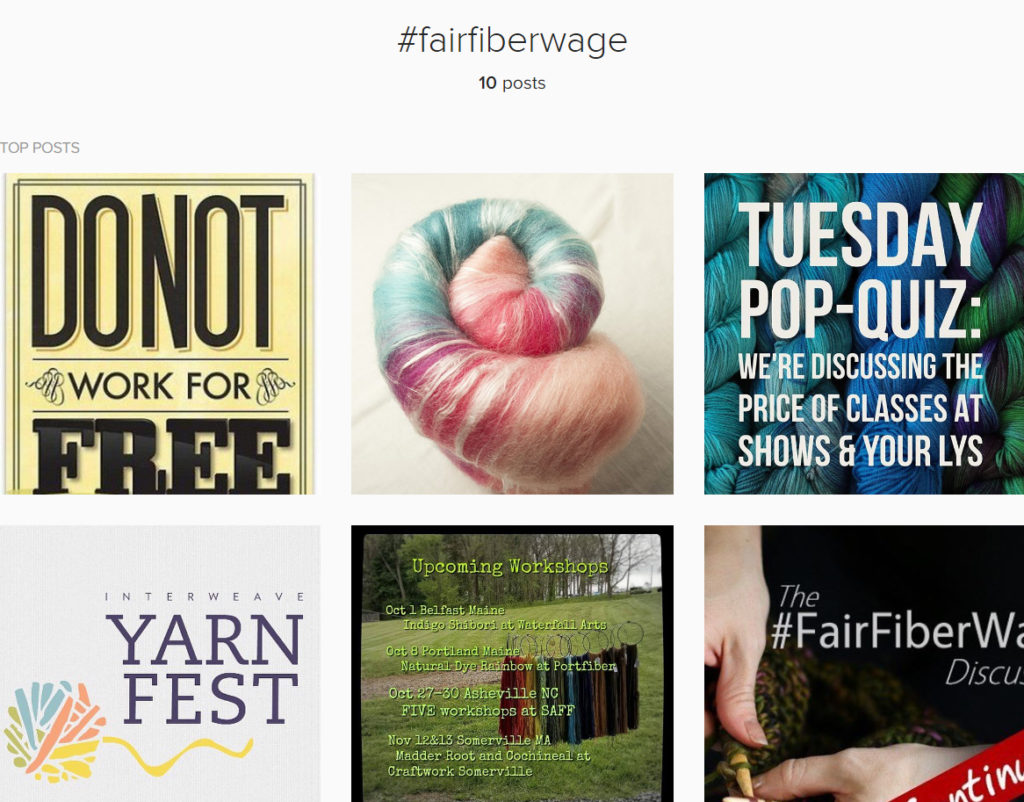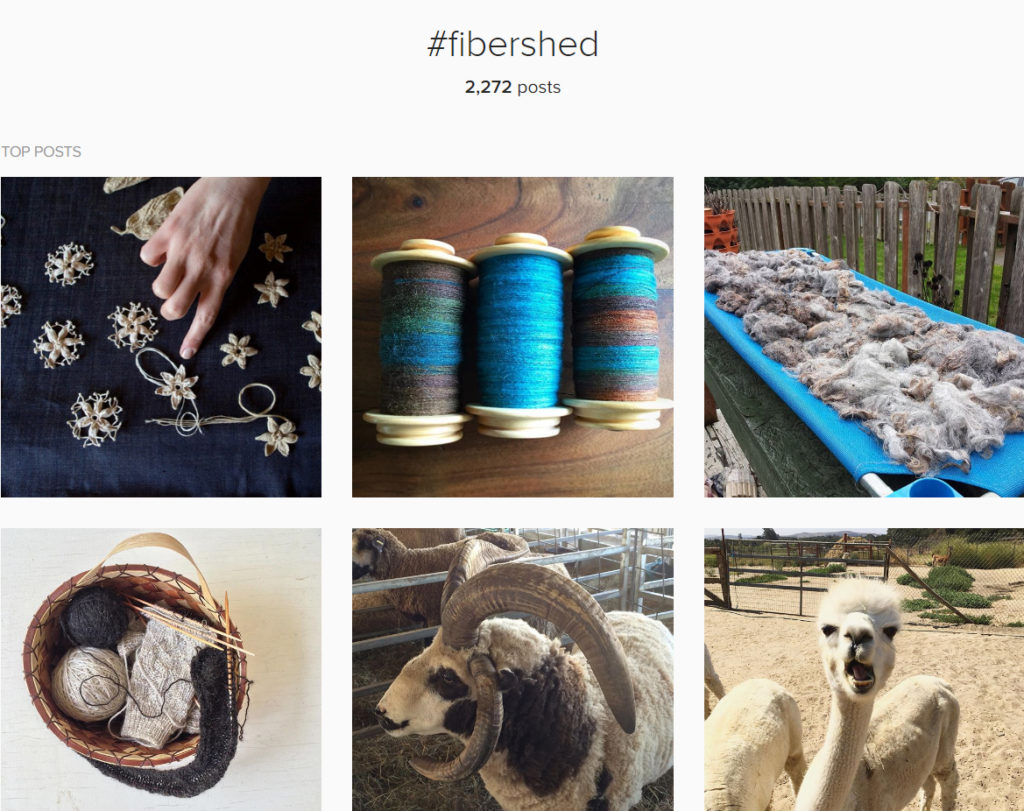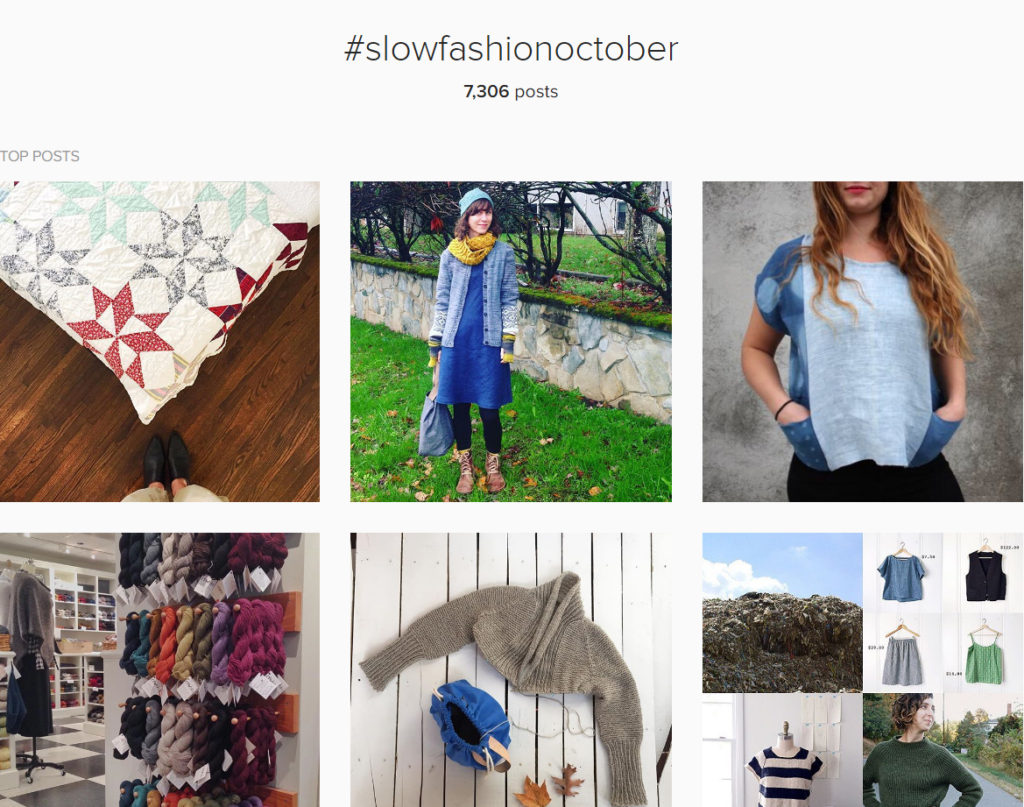This Wovember we are bringing you content built around the theme of The Politics of Wool and are publishing pieces under five headings – Grassroots Activism; Labels; Think Global, Act Local; Be the Change and Woolpowerment! Throughout the month we are also encouraging Wovember readers to be the change you want to see, and to take Wovember forward on your own blogs and social media platforms by publishing your own feelings towards, and celebrations of, 100% wool. These are some of the simplest ways to extend the reach of Wovember, enrich the discussions around the politics of wool, and bring Wovember concepts to new audiences. Today we are examining the power of the humble #hashtag and of course this being Wovember, we are especially interested in hashtags that relate in some way to wool.
For a long time we looked at that gate symbol (maybe you called it the pound key) on our phones and keyboards and thought about its near uselessness. Many of us associate it with calling automated lines and pushing it to get through to a human voice. In the wonderful world of social media though, that little symbol can preface a lot and carry forward a real message.
If you have a smartphone with a camera then you can create an image, and/or write some text and publish it online. The inclusion of a hashtag means that anyone sharing similar stories and pictures can immediately find and connect with you. That we can so easily self-publish and share our ideas, and find others who are joining in with the same conversations, is amazing. It also means that an on-point hashtag can spread like wildfire; it can enable opinions to develop, diversify and amplify their way across the internet. There are good and bad consequences of this but today we want to concentrate on the creative possibilities that the hashtag offers for enacting political and social change.
#hashtagsoftheinternet
Using a hashtag in posts not only expresses key phrases, concepts and concerns; it also joins them up with the world and other like-minded (or not!) people. Hashtags are tracked, utilised and consumed in a very active way, but also in a passive way too. Even if you do not take part in activities like #memademay, (started by blogger So, Zo, What do you know) we have a passing cognizance of the event happening, because of the use of hashtag. Perhaps you were the same with #Wovember until you popped over here for a look?
Hashtags can make you aware of a certain event, situation or conversation and open up that discussion more.
#woolworks
The Campaign for Wool used this hashtag to promote their “Davos of Wool”; a conference with global fashion and furnishing brands on the subject and future of wool. Though we applaud big business and fashion increasing the profile of wool, we also believed this event was neglecting the knowledge of many small wool businesses, independent wool workers and crafters (you can read about this here and in also here, in our open letter to the CFW). To redress what we saw as an imbalance in the representation of wool businesses, we asked our readers and followers on social media to adopt the hashtag intended for the conference, and to use it to celebrate grassroots wool workers whose expertise and passion deserves praise and recognition.
Following the hashtag on social media that day revealed much praise for – and celebration of – mill-workers; wool bloggers; hand-crafters of all persuasions; dyers; spinners; weavers; shepherds and farmers. All the sectors of the wool industry who had not been invited to the conference were represented by hashtags and images online instead. People tracking the hashtag to follow the proceedings of the conference therefore got a much bigger picture of #woolworks than the one published through official channels. On that day, there was also an overwhelming amount of feedback from people who felt that the CfW was not supportive to them as grassroots wool workers. The latter will be the subject for another post, but for now it’s worth saying that one day and one hashtag generated a woolly landslide of feeling, emotion, celebration and questions.
#fairfiberwage
The #fairfiberwage is another hashtag that saw a fair bit of action this year, with long-term fibre experts and wool workers weighing in to discuss the wages of freelance knitwear designers, tech editors, sample knitters, and teachers. If you work with wool, this is an enormously important conversation that you can follow at whopaysknitters.com. The use of the #FairFibreWage hashtag has enabled many voices to weigh into a complex and multifaceted discussion about this fundamental area of our work with wool (and other fibres).
#fibershed and #slowfashionoctober
Projects like #fibershed and #slowfashionoctober also have an intrinsic connection with wool, because traceable, sustainably-produced woollen yarns can offer a positive alternative to the unsustainably produced and polluting materials of fast fashion. Fibershed was founded by Rebecca Burgess in 2010 who made a commitment “to develop and wear a prototype wardrobe whose dyes, fibers, and labor were sourced from a region no larger than 150 miles from the project’s headquarters”. Since then, that personal project has grown outwards into something more global and collective, envisioning “the emergence of an international system of regional textile communities that enliven connection and ownership of ‘soil-to-soil’ textile processes.”
#slowfashionoctober is a different but arguably related participatory project about sustainability and fashion. It seeks to inspire folks to consider and put into practice some of the many everyday ways of creating slower wardrobes. #slowfashionoctober presents accessible opportunities to be more thoughtful about our clothes and the resources involved in their production. In the words of founder Karen Templar:
I’d like us to be able to celebrate not only our own makes (although definitely that!) but clothes that have been made for us by others; worn over the course of years or decades; handed down or rescued from thrift shops or attics; mended; handcrafted in the small studios of slow fashion designers and/or from ethical fabrics; and so on. I want it to be about responsible and sustainable fashion in all its splendor, in other words. An opportunity to discuss and explore the wide range of topics that are at the core of slow fashion.
Following and using these hashtags on social media enables the discussion to be rich, diverse and reflective; it also enables participants to critique the concept of slow fashion and to ask how it might be made more accessible and available to everyone.
Whether you are interested in celebrating the production of wool and its place in contemporary industry; understanding how wool workers make a living; or exploring the ways in which wool can play a part in sustainable fashion, we feel the above hashtags have opened important conversations on the politics of wool. Each one shows how a hashtag and the discussions it provokes can bring about awareness or change. But we also know that this is just the tip of the iceberg, and that there are many more important things for us to explore together. We would love to read in the comments about the hashtags you use and follow.
#bethechangeforwool
A few weeks ago, for the Campaign for Wool’s UK Wool Week, we encouraged folks to reprise the #woolworks hashtag. The Campaign for Wool can seem shall we say a little merino-heavy at times, and we encouraged folks to reprise #woolworks to celebrate some of the many other breeds of sheep whose wool can be used for producing garments and homewares. On sharing this plan on instagram, we received a comment almost immediately expressing hope that we might also come up with a hashtag for our comrades further afield so that they too might feel included and able to celebrate their sheep breeds. We utterly applaud the concept of everyone everywhere celebrating local sheep! But here’s the thing: nobody needs to invent a hashtag for you, and you definitely don’t need to ask first. You can start your own hashtag at any time, and we sincerely hope you do.
This Wovember we’re asking you to think about the wool issues close to your heart and to start discussions online. Do you worry about how Brexit will effect UK agriculture and wool work? Do you have burning questions on the future of wool? What are your thoughts on sustainability and fashion? Hashtags will help you find answers and comrades. Make sure you use something well suited for your purpose, easy to remember (And that doesn’t *look* like something else inappropriate when you take out the spaces!) You can also use our hashtags too – #bethechangeforwool #wovember2016 #wovember #politicsofwool.
We cannot wait to see how you change and enrich this complex woolly conversation in which all of us have a part to play and we hope this post has inspired you and given you confidence in the creation and sharing of hashtags!
